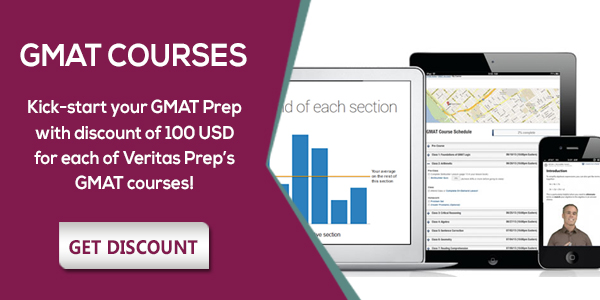It will be an unfamiliar challenge and you will be in a new environment. It is most effective to work with professional GMAT instructors, who will guide you correctly and make sure you allocate a sufficient amount of time.
You will need to commit four to five months for focused preparation. This time span is the most appropriate. Your preparation should not take longer or you run the risk of losing your focus. However, if you spend any less time your preparation will be insufficient.
Check out: Five Steps to Crack the GMAT Preparation Books and Achieve a High Score
You should have mastered the different types of cases in the test. The most effective way to work is with professional GMAT instructors, either in a group class or individually. In this way you will be given a good introduction and then be given correct guidance on how to handle and read not just the single tasks, but all tasks of the same type. None of the test preparation books provides a full overview of all types of questions. The best approach is to learn how to solve each group of problems within a single type.
Check out: GMAT Timing Strategy Dos and Don’t
Furthermore, when you have mastered the methodology of solving the different groups of problems, you will need to practice at least 200 – 300 sample questions for each of the sections: Sentence Correction, Reading Comprehension, and Critical Reasoning, and a further 500 questions on Problem Solving plus the same number on Data Sufficiency.
Try our free GMAT practice test.
This will help students apply the strategies taught to them by the instructors and to sense the ‘spirit’ of the test. This volume of work will ensure a score of 620 – 660. A higher score will require doubling the number of practice questions mentioned above. The next step is to focus on computer practice tests for 10 days before the actual sitting on the test. The first couple of days should be devoted to Verbal and Quantitative sections separately. Only then should you start on full-length practice tests in order to prepare yourself for the real challenge of the test itself.
Some practical tips on how to crack the GMAT :
Tip #1:
The test begins with a 30-minutes essay – Analysis of an Argument, followed by the Integrated Reasoning section (introduced in June 2012). Only then does the ‘core’ of the test begin. This is the part which gives the score which each candidate aims for, the maximum being 800. My advice is not to focus too much on the Integrated Reasoning section, but rather to aim for a reasonable score on this section (as many universities still do not take it into consideration yet). Thus, you will save your energy and concentration for the Verbal and Quantitative sections.
Tip #2:
Another important strategy concerns the number of questions answered in each section. If you are short of time and you have about 3 minutes left with 5 to 10 questions left to answer, I would advise guessing, rather focusing on possibly solving correctly one or two of the questions.
Check out: Educated Guessing and the GMAT
Tip #3:
If you finish a section quickly, do not answer the last question too quickly. It is best to wait until the time allotted for this question and then to finish the section. In this way you can extend the break between the sections and maintain your concentration resulting in an overall higher score.
Tip #4:
Never try to calculate your score during the test. Although the test is computer adaptive and the fact that you have an easy problem does not mean you have failed the test. A problem may seem easy to you, but the system may consider it a hard one and increase your score. Keep your conclusions for the end of the test.
Check out: How to Ace the GMAT – Tips and Tricks to Score High
Check out our info-graphic about the GMAT:





